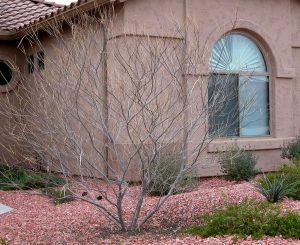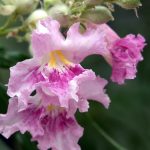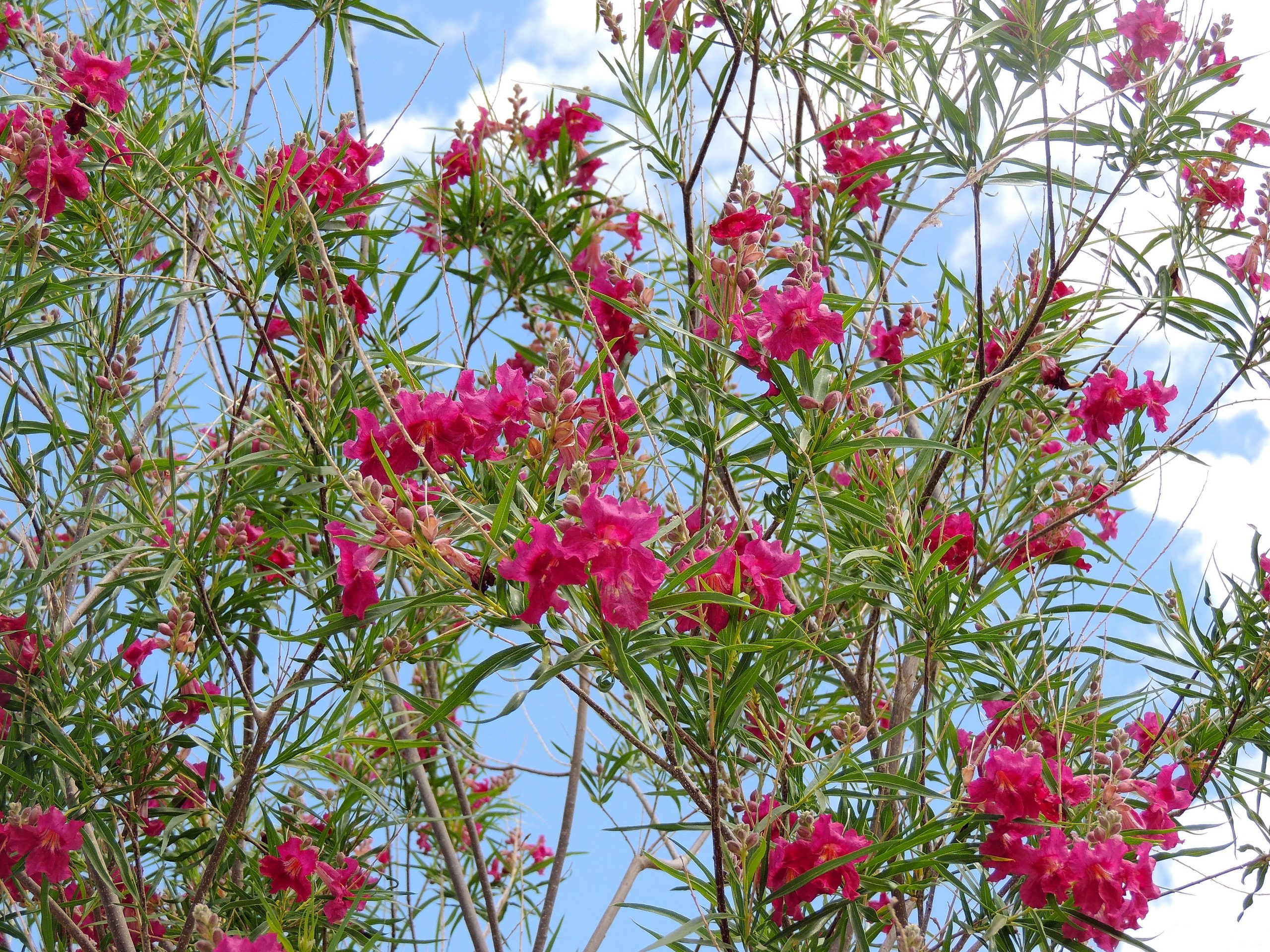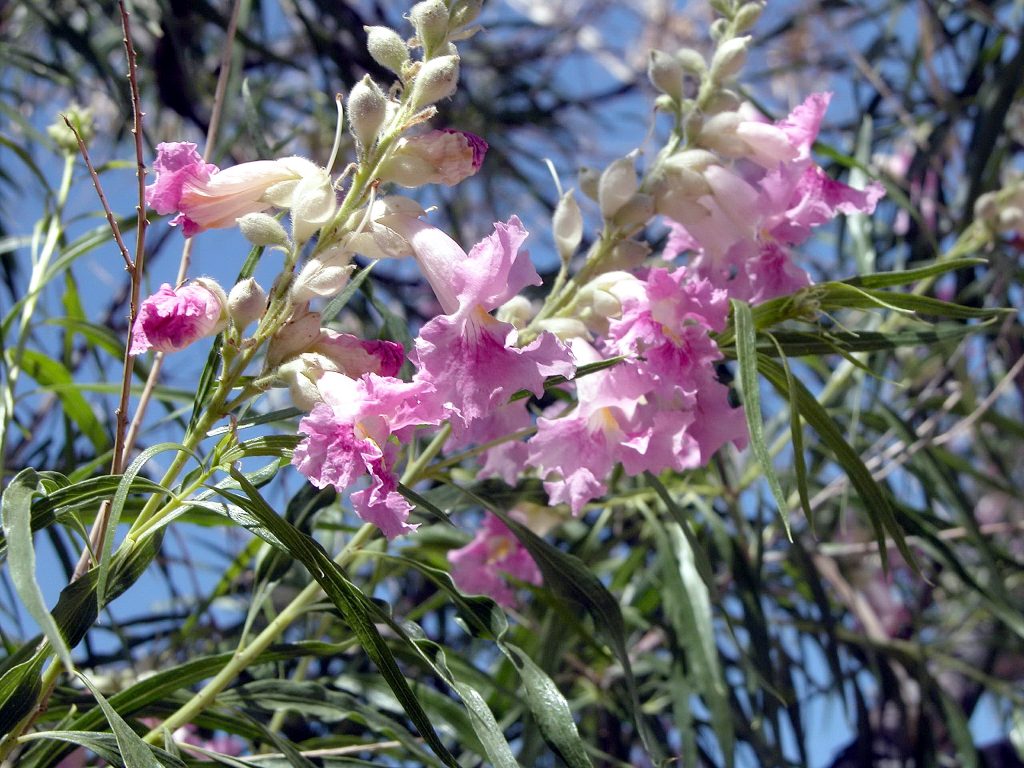Desert willow is a fast-growing tree reaching up to 30 feet with spectacular trumpet-shaped flowers and bright green, willow-like foliage. Chilopsis linearis is native to the southwestern United States and northern Mexico, and is commonly seen in dry washes from 1,500 to 5,000 feet. The fragrant orchid-like flowers, in varying colors, attract hummingbirds. Desert willow blooms in clusters from May through September. Be thoughtful about placement as this tree is deciduous in winter, when it shows papery, pencil-size seed pods (fruits) that attract songbirds.

Desert willow can be planted on western and southern exposures where shade is desired in summer, and allows one to take advantage of the winter sun. It provides light shade for other plants such as Mexican honeysuckle and penstemons. Once established, this tree can survive on rainfall alone, but supplemental irrigation during the summer will produce more attractive foliage and flowers. It prefers well-drained soil. Left to grow naturally, chilopsis will grow into a large shrub. Careful pruning of basal suckers will encourage development of a more tree-like form.
Desert willow enhances the oasis feeling of a landscape and is a valuable source of food for native wildlife. Because of its leafless nature in the winter, desert willow works best when grouped with other desert trees and shrubs.

The many forms of desert willow vary considerably in growth habit, mature height, leaf size, and flower color. Chilopsis can be a tall, upright tree or a weeping shrub. Mature heights range from 18 to 30 feet. The leaves are narrow or lanceolate (lance shaped) and occasionally sticky in some forms. Different cultivated varieties of desert willow offer flower colors of white, light pink, lavender, deep purple-red, and royal purple. Specific named cultivars have consistent growth characteristics.

We recommend that you research the growth characteristics of the cultivated variety you will be using in order to ensure the right size and shape for the planting area.
Learn more information and find more details about this plant and see additional photos at the Arizona Municipal Water Users Association low water use plant database.
This feature is based on a concept and text originally developed jointly by the Arizona Nursery Association and the Arizona Municipal Water Users Association (AMWUA) with partial funding from the Arizona Department of Water Resources.


